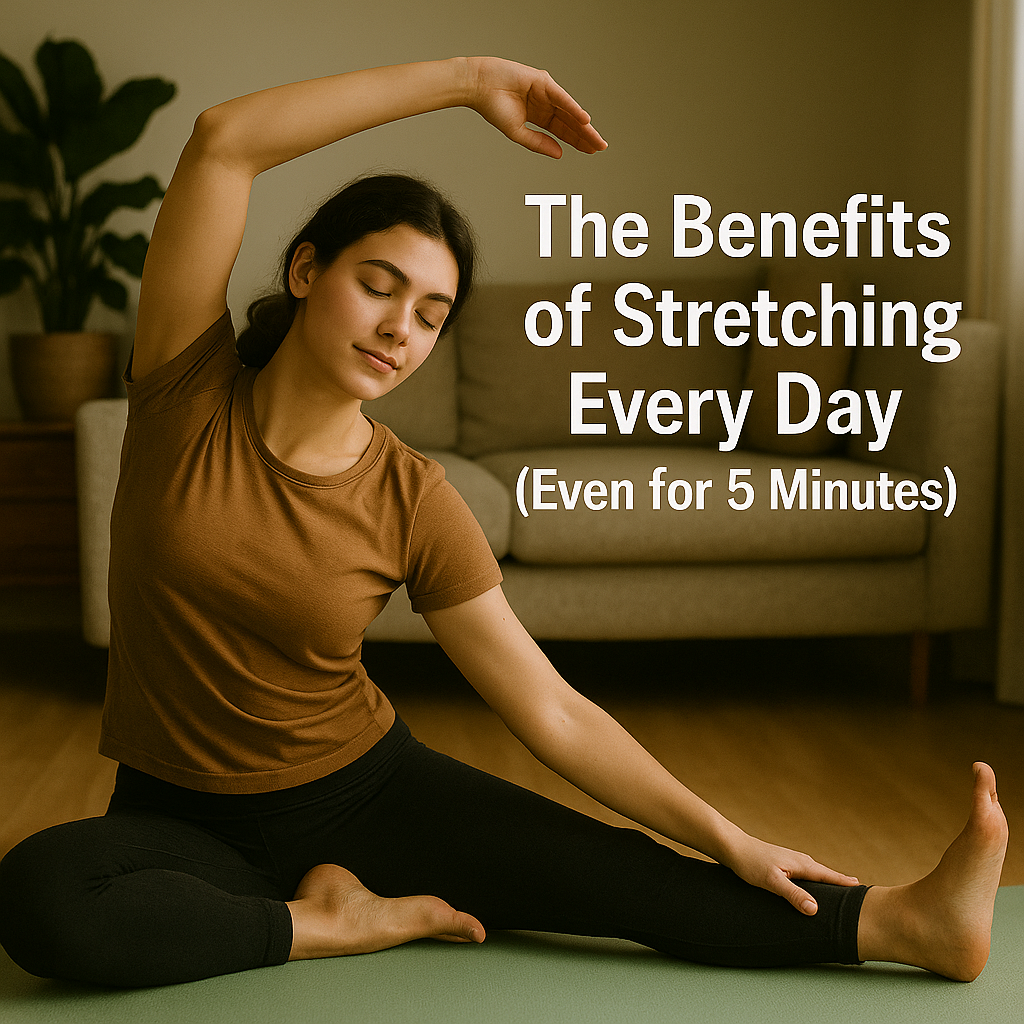Stretching is one of the simplest yet most overlooked habits for improving your physical and mental well-being. It doesn’t require fancy equipment, a gym membership, or a lot of time. Even just five minutes a day can make a noticeable difference in how your body feels and how your mind functions.
Whether you’re sitting at a desk all day, exercising regularly, or just want to feel more at ease in your body, daily stretching is a habit worth building.
Why Stretching Matters
Your muscles naturally tighten throughout the day, especially if you’re inactive for long periods. Over time, this can lead to poor posture, limited mobility, and discomfort. Stretching helps counteract these effects by improving flexibility, circulation, and alignment.
It also supports your joints, boosts your energy levels, and can even help reduce emotional tension by calming the nervous system.
Physical Benefits of Stretching
Stretching reduces muscle stiffness and tension, especially in areas prone to tightness like the neck, shoulders, and hips. It increases flexibility, which makes daily movements smoother and more comfortable.
Regular stretching also supports better posture by lengthening tight muscles that pull the body out of alignment. It enhances blood flow to the muscles, helping with recovery and performance, particularly if you work out regularly. Additionally, flexible muscles reduce your risk of injury from sudden movements or repetitive strain.
Mental and Emotional Benefits
Stretching isn’t just for the body—it’s a stress reliever for the mind. It activates the parasympathetic nervous system, which helps your body shift into a calm, relaxed state. This can reduce anxiety and promote emotional regulation.
Stretching also improves sleep by helping you wind down and release physical tension from the day. When done mindfully, it increases body awareness and encourages present-moment focus, making it a gentle form of moving meditation.
When to Stretch
Stretching in the morning can help you shake off sleep stiffness and boost circulation. Midday stretching is perfect for breaking up long periods of sitting and refreshing your energy. Pre-workout dynamic stretches help prepare your muscles for movement, while post-workout static stretches aid in recovery. Evening stretches help you unwind, reduce stress, and prepare for a restful sleep.
A Simple 5-Minute Daily Routine
Neck rolls for 30 seconds can relieve tension and improve mobility
Shoulder rolls for 30 seconds open up the chest and release upper body tightness
A standing forward fold for 1 minute stretches your hamstrings and back
Cat-cow stretches for 1 minute improve spinal flexibility
A seated spinal twist for 1 minute per side helps release the lower back and improve posture
This routine targets the most commonly stiff areas and works well for beginners.
Tips for Safe and Effective Stretching
Always breathe deeply and avoid holding your breath. Stretch slowly and avoid bouncing, which can lead to injury. Stretch to a point of gentle discomfort—not pain—and hold each stretch for 15 to 30 seconds. Be consistent and stretch regularly to see long-term benefits. The goal is to feel better in your body, not to force flexibility.
Stretching Myths to Ignore
You don’t have to be flexible to start stretching. In fact, stretching is how you become more flexible. You also don’t need to dedicate long sessions—short, consistent practice yields the best results. Stretching isn’t only for athletes or yogis; everyone can benefit, especially people who spend hours sitting or dealing with daily stress.
How to Make It a Habit
Attach stretching to something you already do, like brushing your teeth or winding down before bed. Keep a yoga mat in sight as a reminder. Use calming music or a favorite playlist to make the practice more enjoyable. Even if it’s just a few minutes, showing up daily is what makes the habit stick.
Final Thoughts: A Simple Step Toward Better Health
Stretching is a low-effort, high-reward habit that supports your body, your mood, and your overall well-being. It helps you move better, feel lighter, and carry less tension—both physically and emotionally. You don’t need to do it perfectly or for a long time. You just need to start, stay consistent, and listen to what your body needs.
Make stretching part of your daily rhythm, and over time, you’ll notice how much better you move, feel, and live.

